
The Thar Desert - Western Rajasthan
It is believed that once there was a sea here. Crashing and rising waves. Through the ages somehow it all dried up and became a desert, a marubhoomi. Now there is a sea of this desert. Waves stil rise and crash.
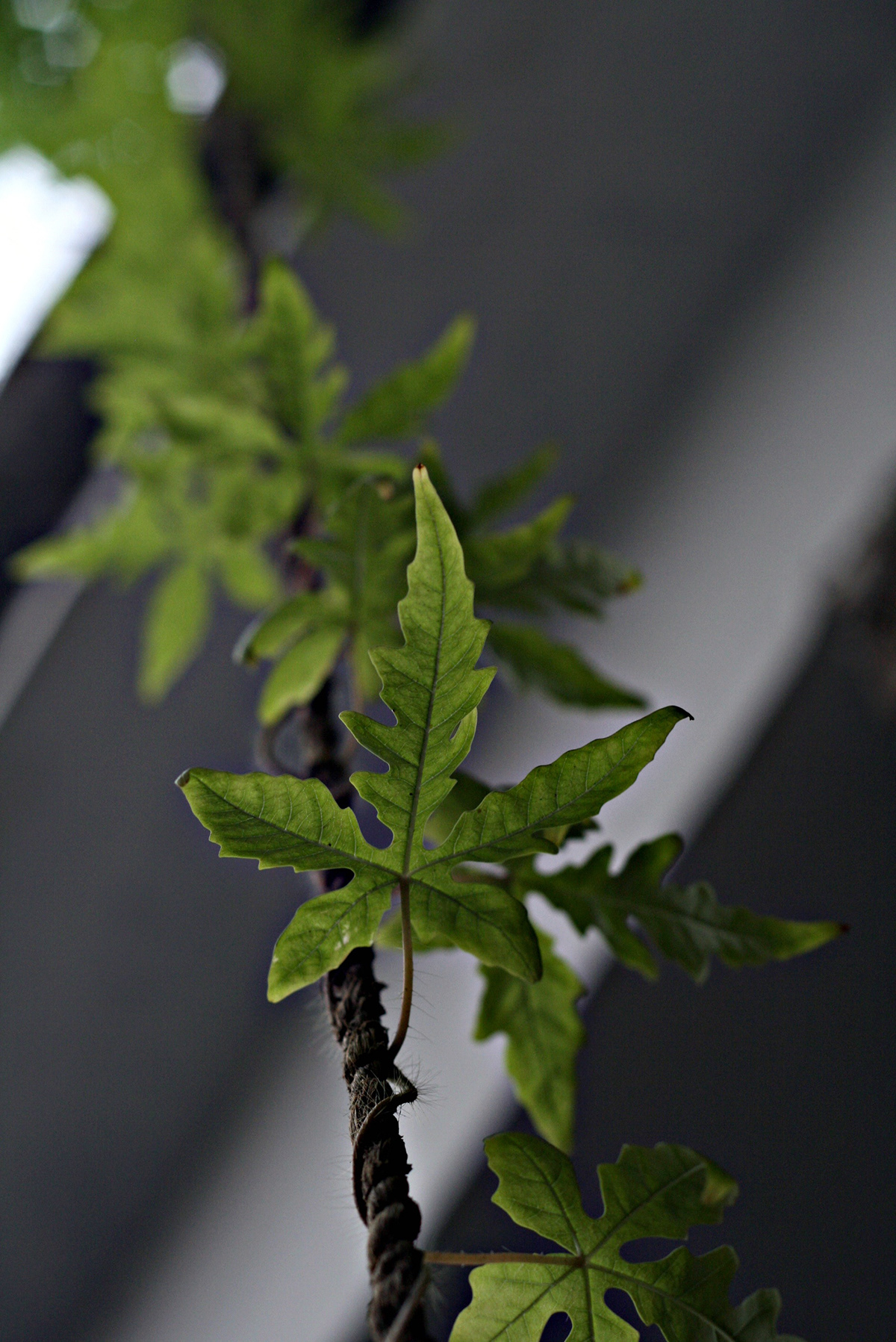
Shekawati's Legend - Ratangarh, Churu
"Barah mein se chaar gaye, to kitne bache?
Sifar."
(If you subtract four from twelve, what do you get?
Sifar."
(If you subtract four from twelve, what do you get?
- Zero)
If it doesn't rain for the four monsoon months in a year- you would be left with no crop, no food, no money and no water.
If it doesn't rain for the four monsoon months in a year- you would be left with no crop, no food, no money and no water.
This is the story of Shekhawati in Rajasthan.
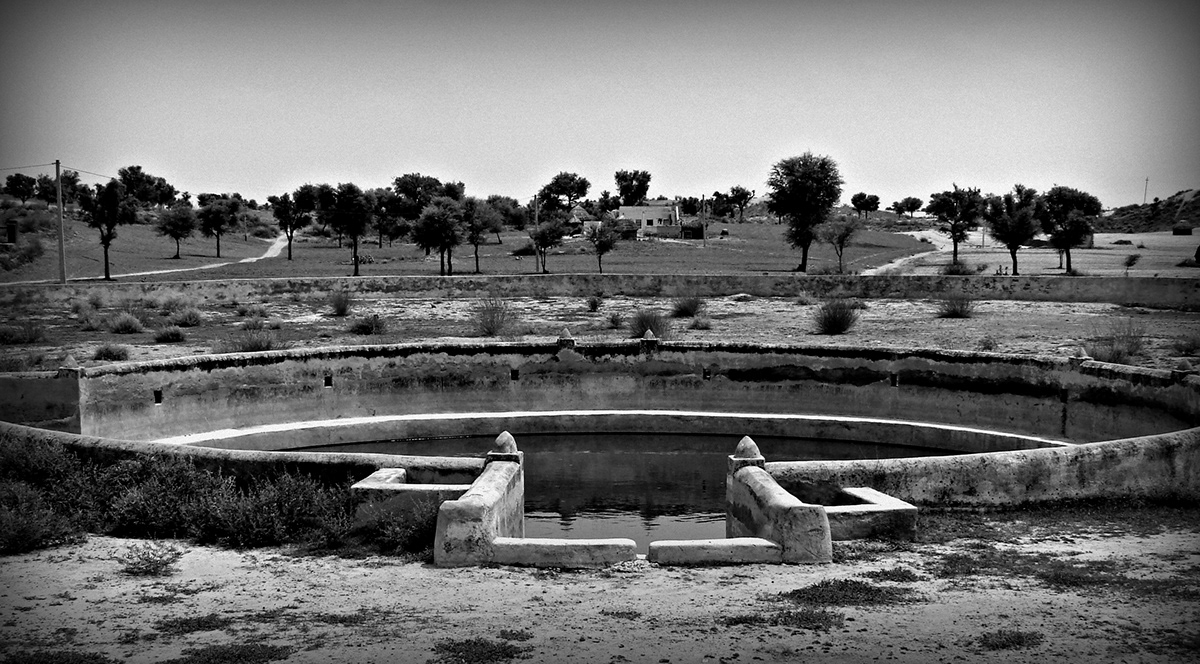
Taankas of Churu- Rajasthan
The people of this desert were innovators. Every drop of rain that fell there- was saved, stored and harvested in tanks like these, ponds, baolis etc. And life went on.

Rainwater harveting tank, Churu
Another rainwater harvesting structure that stores drinking water from the rooftops under ground. It is taken out by a handpump.
Pichola lake, Udaipur
Udaipur has been providing water to its people by creating a series of man-made lakes for ages. The lake city of Udaipur as seen from the city palace.
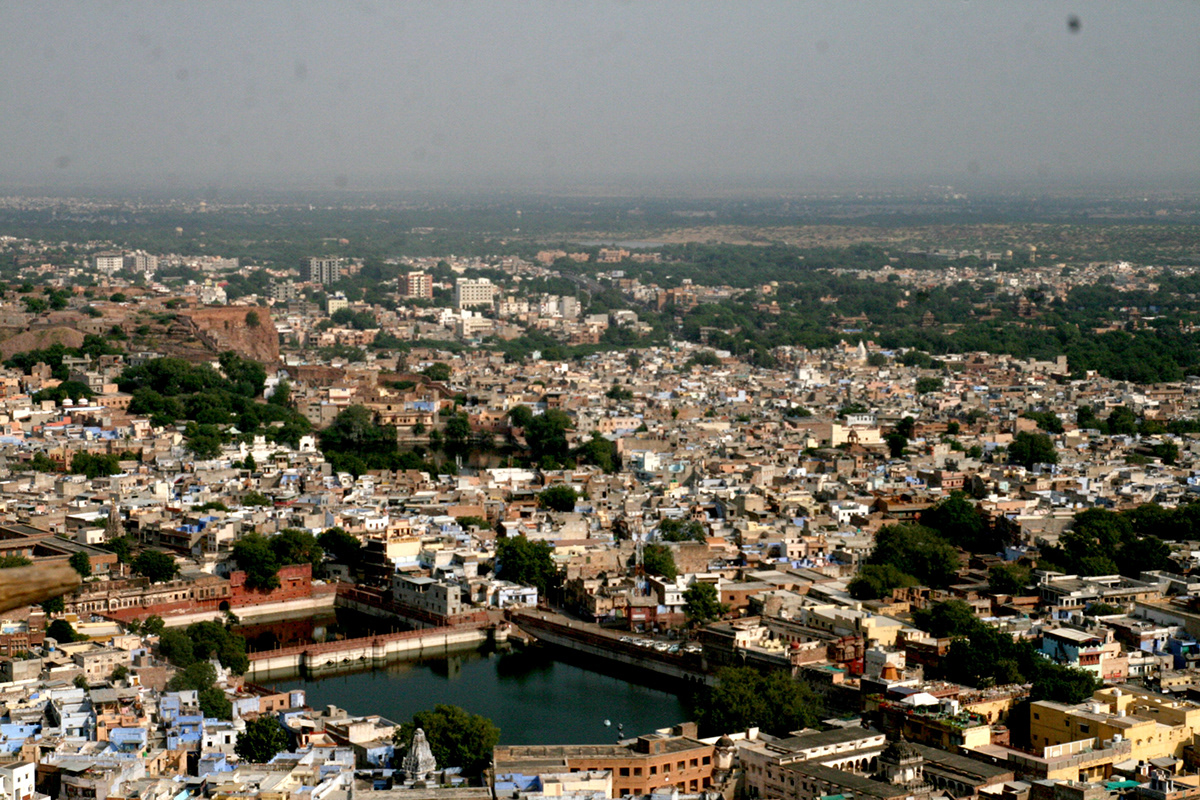
Jodhpur- The Blue city dotted with lakes
In the Aravallis, lies this city- initially built on a hilltop. Dotted with lakes, ponds and bawlis- throughout.
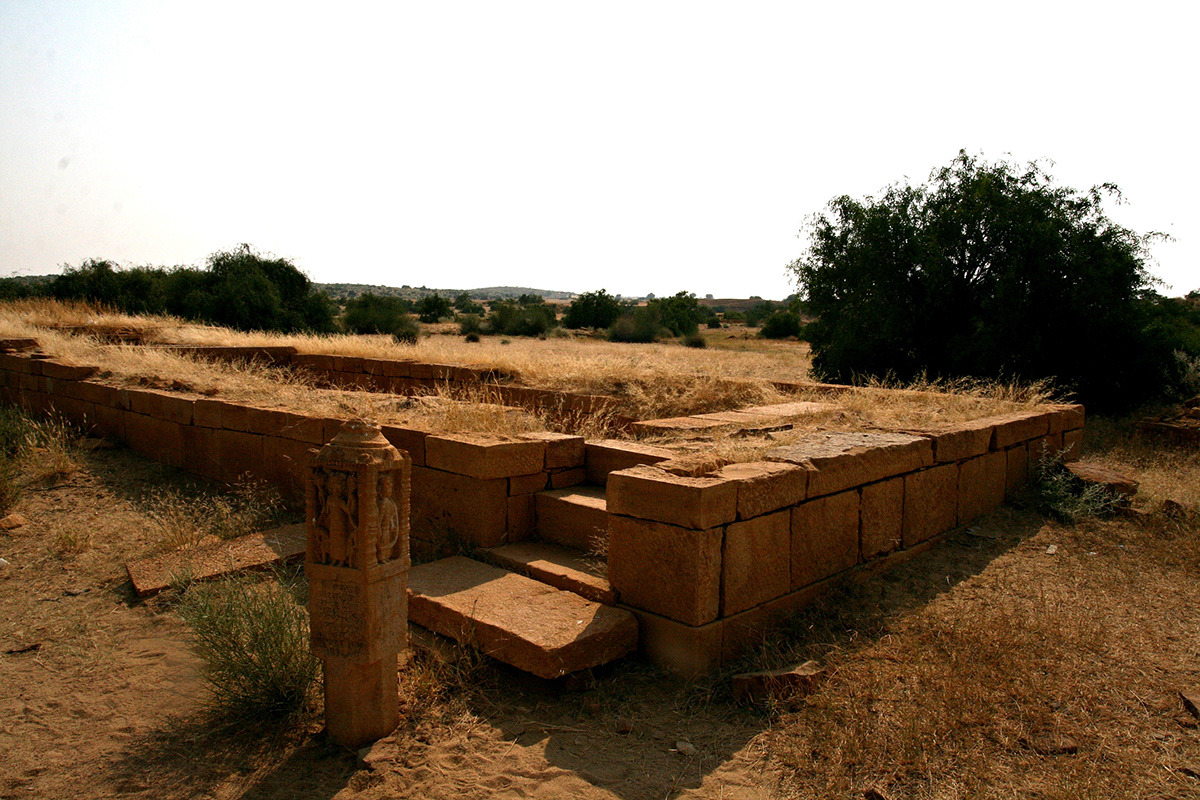
Jaisalmer- Kuldhara Village
The pillar marks the area with water’s presence. Around this people had the wisdom to not pollute and let animals walk in. Behind, is a baoli- that stores drinkable water. These are beautiful structures- usually found till three levels down and have indicators such as animals or murals of gods to estimate the availability of water for a certain time period.

Garisar Lake- Jaisalmer
A natural low lying area was taken up to store every drop of rain that fell in the area. This provided water to the locals of Jaisalmer. A small balcony was later made to enjoy boat rides in the monsoons. It is said that a courtesan built the beautiful entrance to this lake.
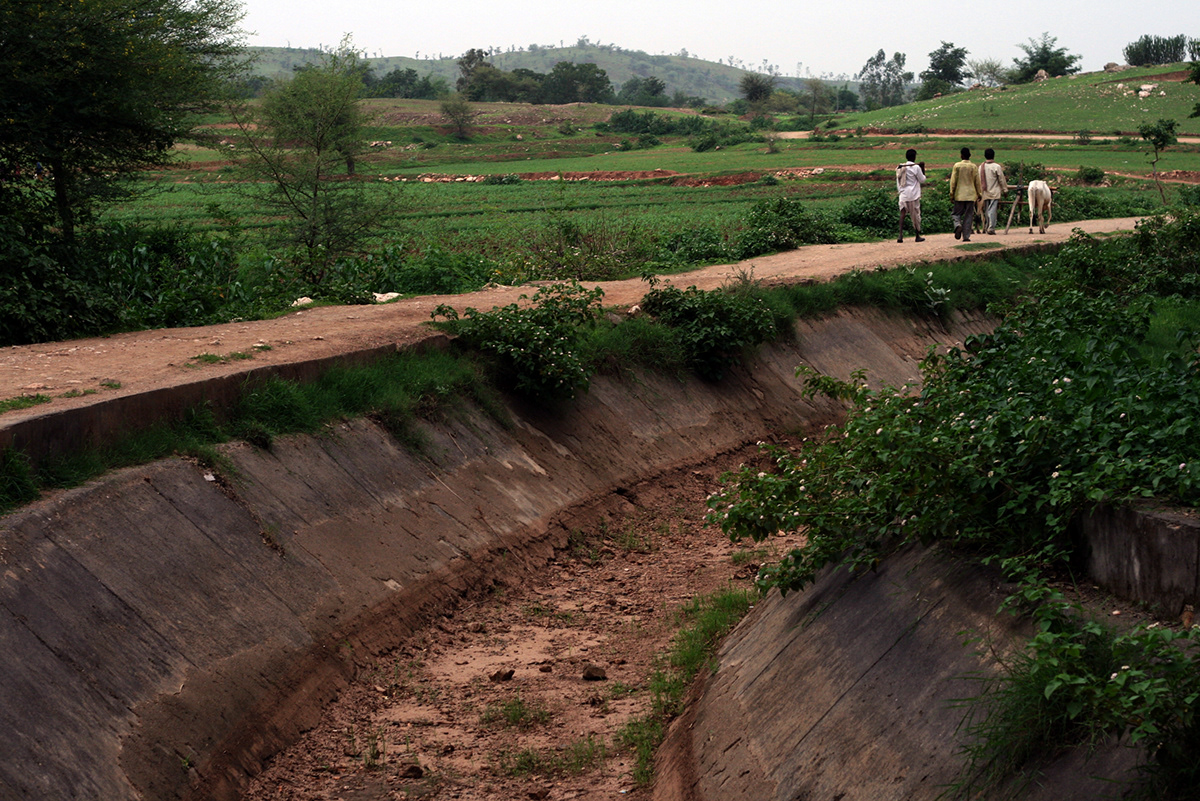
Mahi canal- Banswara, Rajasthan

Swajaldhara- Pay-as-you-go Scheme, Khileria Village, Churu
The fundamental ‘right to water’ is well established and recognised by the Supreme Court for a number of years now. Of course there is little substance to this right beyond its formal recognition. Since the mid-1990s, the law and policy framework concerning drinking water has dramatically evolved. After some hit-and-trials, the World Bank introduced Swajal in 1996. Swajal sought to introduce participation by “users” allowing them to determine their own contributions to the scheme and to manage operation and maintenance. This participation was not a part of the decentralisation agenda but rather promoted people’s control over schemes at the local level, while introducing new obligations and responsibilities that villagers need to shoulder.
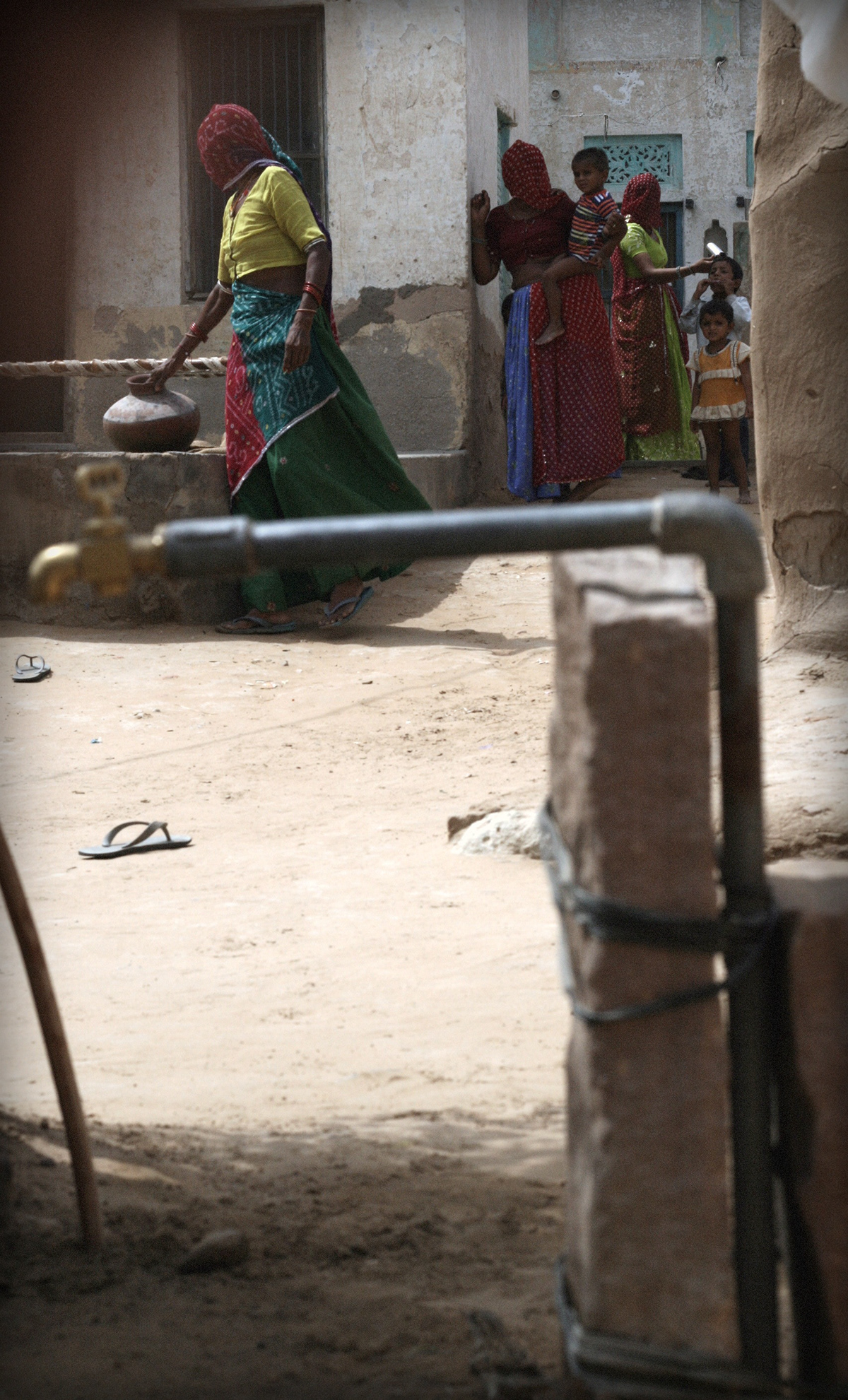
Household Taps - Khileriya village, Churu
Villagers usually take connections from the main chamber of the village’s supply point for a fee. This brought taps to the houses. In many parts of rural Rajasthan it has helped a lot of women, as they don’t have to carry water on their heads and walk for kilometers everyday like before.
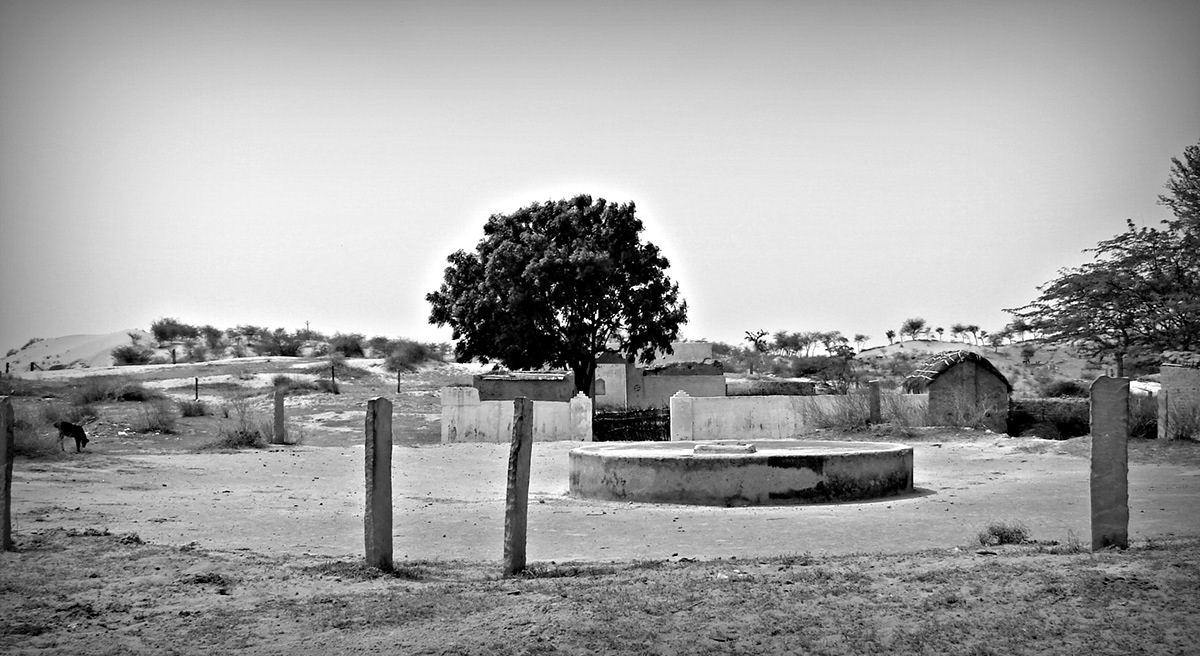
Abandoned Taanka - Churu
With a sloping catchment area this underground tank harvests 100,000 lt of drinking water. In an area where groundwater is scarce or mostly saline, these 40-50 mt deep structures provide sweet water all around the year.
Since the late 50’s, governments have launched ambitious schemes to provide water to rural areas- through pipes and canals that stretched a few hundred kilometers. These traditional structures were thus left abandoned and fell apart.
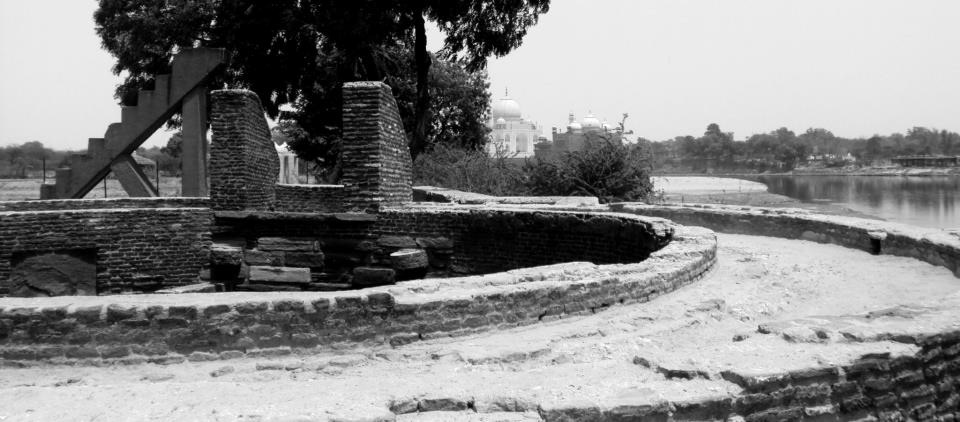
Defunct Baoli near The Taj- Agra
To my right was the historic Agra fort and to the left, the Taj. On the banks of Yamuna river, I sat on the corner of a beautiful defunct baoli (well) in the summer heat.

Dirty, broken and dead.
The Government’s Water Supply tank- Churu
In the 1980's newspapers carried full-page advertisements asking people to shun their 'traditional’ systems because the 'new' supply schemes would change their lives by getting water through pipes and taps.
In the 1980's newspapers carried full-page advertisements asking people to shun their 'traditional’ systems because the 'new' supply schemes would change their lives by getting water through pipes and taps.
Like most of the country, in Rajasthan one can see that plan has somewhat failed- in terms of supply, quality and maintenance.
It was a dream then. It remains a dream, still.
What is village water security?
Mander Block, Ranchi, Jharkhand
An entire process of planning on the basis of data collection and need based calculations, hydrogeology and local practices with a suitable implementation program. After that, a very strong network of continuing operations and maintenance system has to be ensured. It is then crucial to monitor and document the progress or situational development over a period of time to learn and improve from the project. And then lies the most significant part of it all, to make it sustainable. How ? By the process of ensuring water security through capacity building, knowledge sharing, community mobilization and 'participatory' resource management.
Catchment area
Tyma Watershed area, Ramgarh.
Jharkhand
These trenches (dug on slopes of small hills) aid in holding and retaining rainwater. Otherwise, water flows off and percolation dips. These are built in large numbers at a stretch so that maximum water can be retained to ensure water availability down-hill.
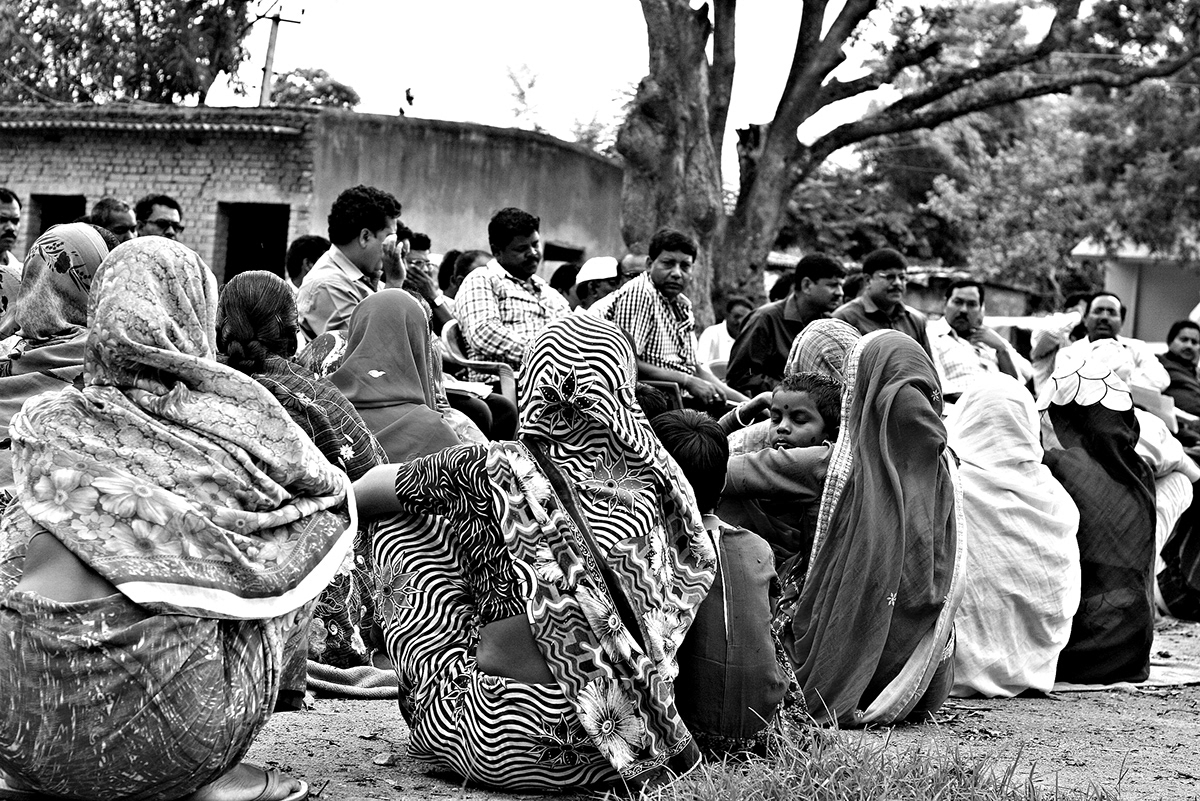
Planning
Tarup Village, Ratu block, Ranchi.
Jharkhand
Villagers gather at a meeting with engineers for data collection for planning a village water security plan. Most of the villagers had never seen their local Junior Engineer or anyone from the Public Health Engineering Department or State Water and Sanitation Mission (SWSM).
Capacity building and Training for Planning and Implementation
Mahila Samakhya training venue, Ranchi
Jal Sahiya (Women Mobilisers) take part in a group activity to design a Village Water Security map.
In this interactive session an imaginary map of a village with its boundary, hamlets, streams, common land, vegetation, hand pumps, wells etc is drawn. Participants are provided with human and livestock population from real life. Case studies are taken up as issues and the participants are asked to draw out a plan. This is challenging and crucial as it decided as to where and what kind of structures should be proposed with available resources. All kind of activities like data collection, quality, structures, planning, community mobilisation etc. come together in this final step of planning.
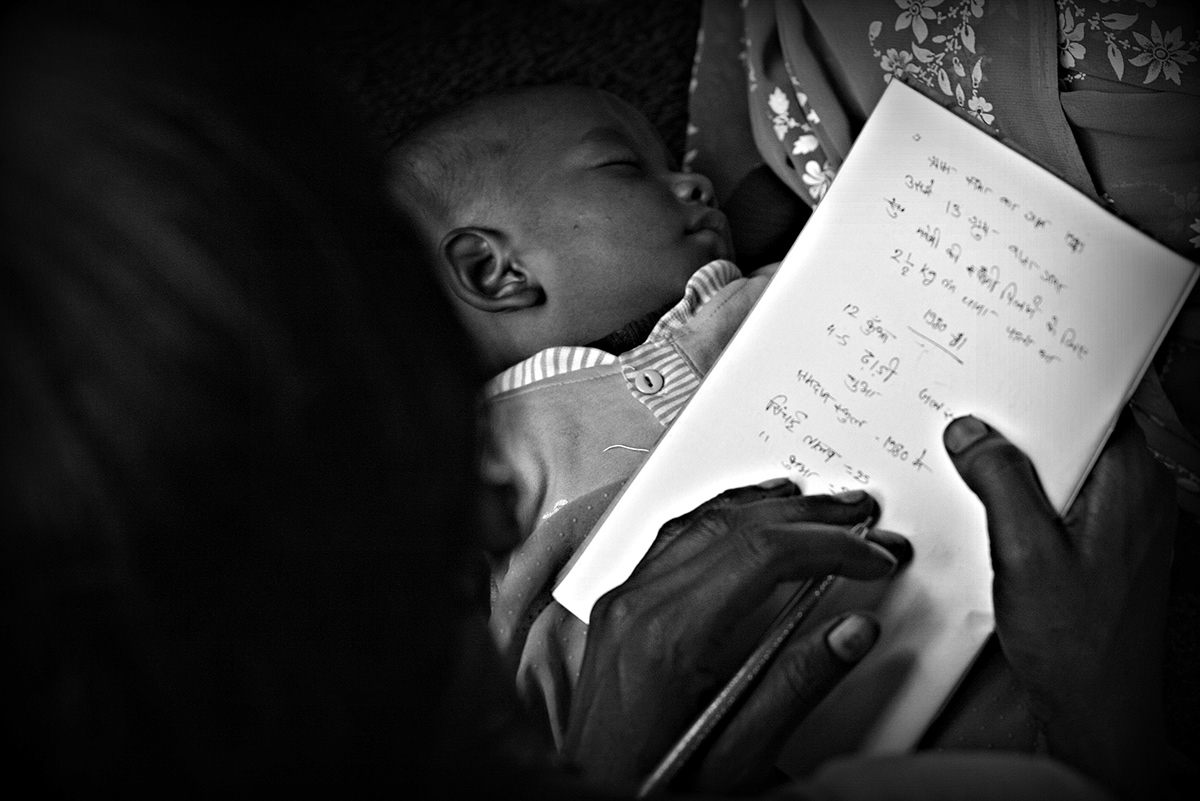
Jal Sahiya – Community mobilisers
Singari Village, Ranchi
JharkhandIn Jharkhand, Jal Sahiyas are newly appointed Village Water and Sanitation Committee helpers. Most of these women are in their 20s. Their responsibilities range from mobilisation, creating water budgets, collecting assigned money from households and ensuring support for hand pump mechanics and pipe water-supply operators.
Most of them had their infants clinging throughout the trainings. It didn't deter their concentration much, like here.
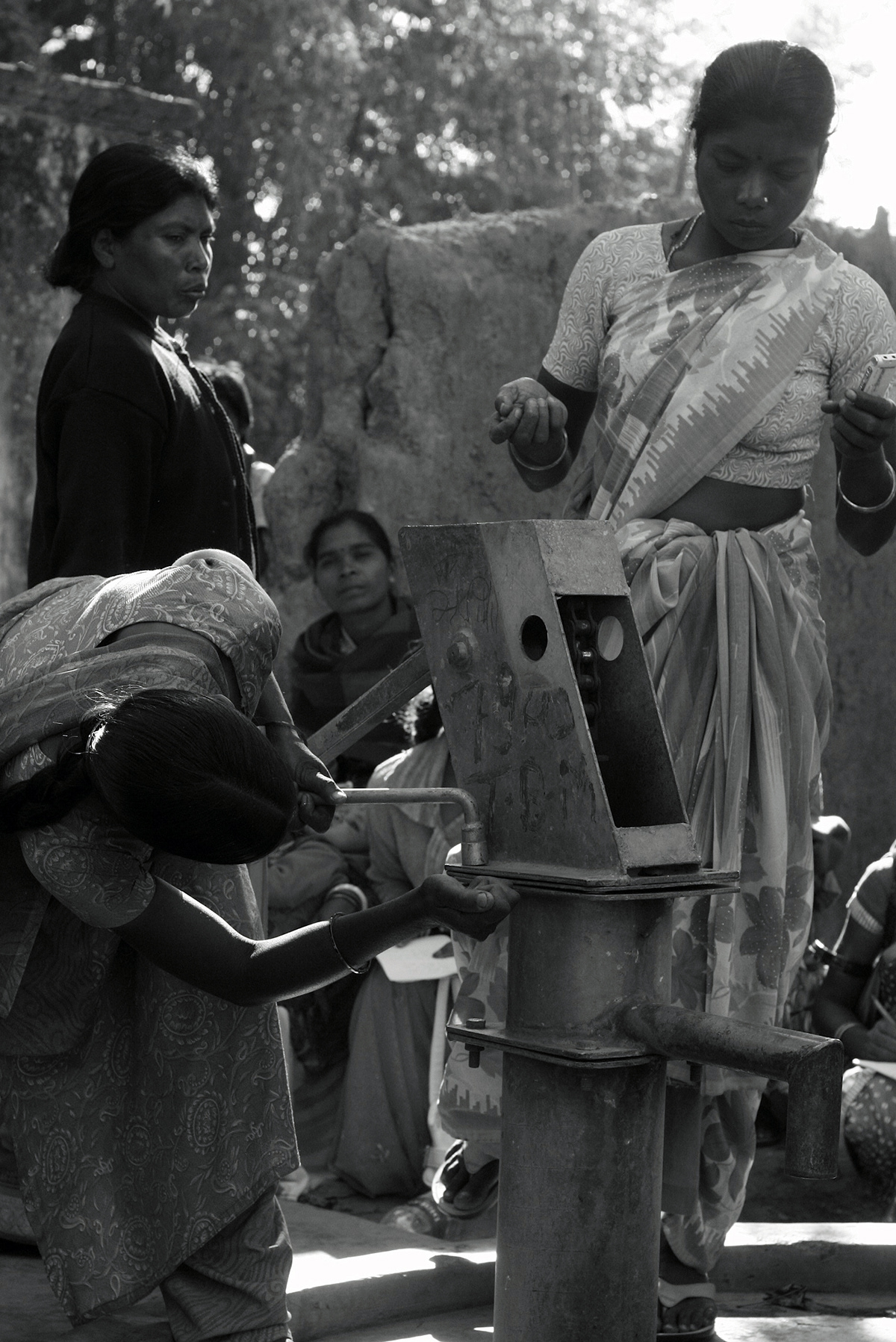
Hand pump Mechanics- Operation and Maintenance
Mander block, Ranchi.
Jharkhand
‘ auratein kise theek kar dengi? yehan toh sab jangli log rehte hain madam. badi mushkil hogi. madad leni padegi doosre aadmi logon se ! ‘, our driver said with a sly smile.
‘ How will these women repair this ? This is a tribal area and they will have to take help from men’
After a rickety ride, sharp turns and beautiful fields we reached the Oraon village in the interiors of Mander block.
Those women carried the heavy parts one by one with ease. Pulled out the eight part long-heavy pipes of the hand pump. Other women curiously watched. Part by part- they explained. Water came gushing out.
And the hand-pump was repaired.
Those women carried the heavy parts one by one with ease. Pulled out the eight part long-heavy pipes of the hand pump. Other women curiously watched. Part by part- they explained. Water came gushing out.
And the hand-pump was repaired.

Participation by local villagers
Outskirts of Auradih village, Tyma Watershed area, Ramgarh
Jharkhand
Communities (jan) follow simple but strict rules to ensure their survival with jal, jungle, zameen, janwar. One of the strictest is where animals are kept an eye on by the owner or anyone to ensure that animals do not ruin crops, agricultural produce or drinking water sources. One person always accompanies an animal(s) and knows its whereabouts.
Jal. Jangal. Zameen. Jan. Janwar.
Naduwali River, Sariska's Buffer Zone
Alwar, Rajasthan
Once, a dry and parched area, Nanduwali village was struck by migration. A few who stayed back decided to change the situation. Their only chance lay in revival the lost Nandu river.
So they turned to local wisdom. The conservation of ‘Jal. Jangal. Zameen. Jan. Janwar’ (water, forest, land, people and animals). By ensuring base flow, construction of various small recharge and storage structures, conservation of forest area and participation of local people – a dead river today ensures a higher water level in the wells.
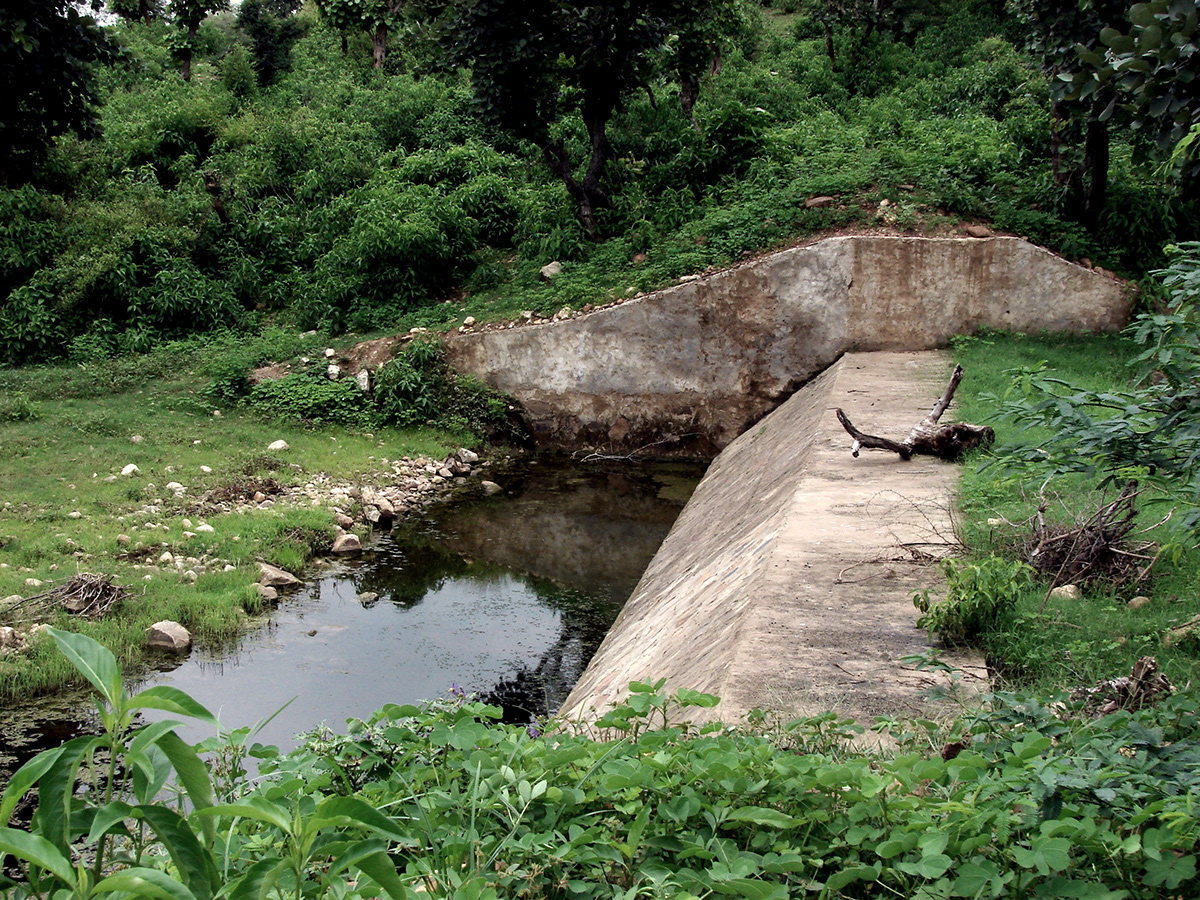
Jal. Jangal. Zameen. Jan. Janwar.
Naduwali River, Sariska's Buffer Zone
Alwar, Rajasthan
Naduwali River, Sariska's Buffer Zone
Alwar, Rajasthan
Once, a dry and parched area, Nanduwali village was struck by migration. A few who stayed back decided to change the situation. Their only chance lay in revival the lost Nandu river.
So they turned to local wisdom. The conservation of ‘Jal. Jangal. Zameen. Jan. Janwar’ (water, forest, land, people and animals). By ensuring base flow, construction of various small recharge and storage structures, conservation of forest area and participation of local people – a dead river today ensures a higher water level in the wells.
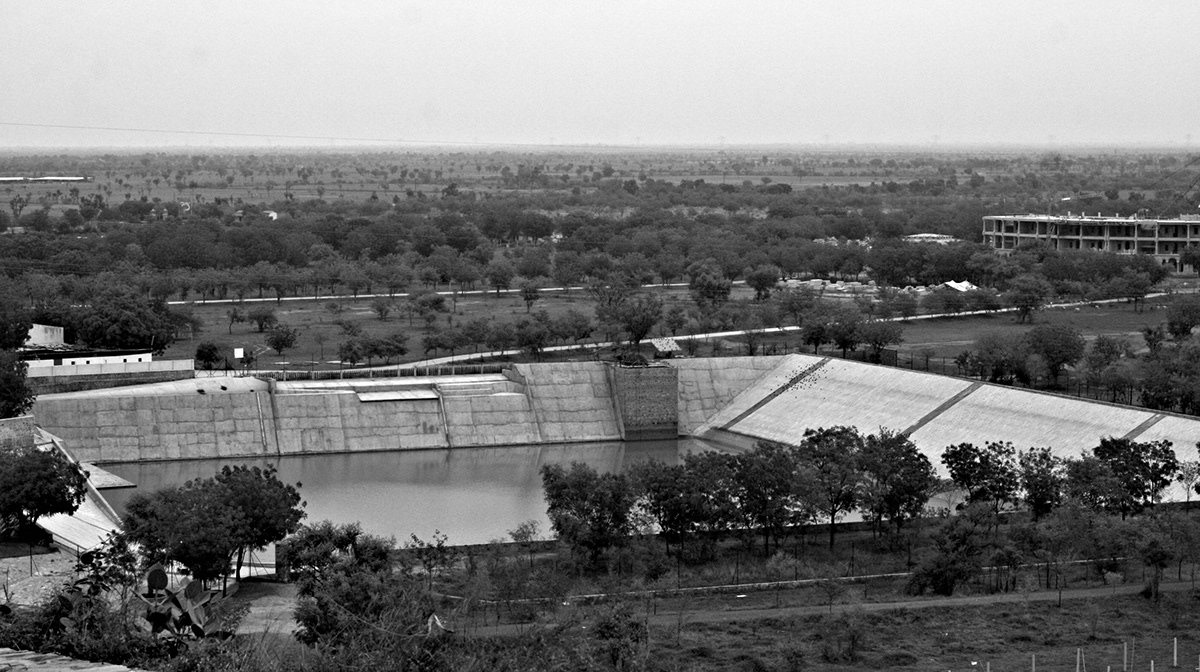
Innovative Practices
Yoga in Life, Jadan Ashram,
Pali
Rajasthan
A 10 mt deep water proof sarovar stores rainwater for a Gurukul, hospital, hostel and nearby villages. This photo was taken from a man-made mountain - from the soil that was dug out to make the sarovar. During water shortage, water from the sarovar is filled in tanks and supplied to nearby villages.
From the mountaintop one can see a semi-arid, dry and lifeless area. Aligned with trees, gardens and a pond for natural re-charge- the boundary walls of the ashram’s compound present a different story from the area outside its gate.
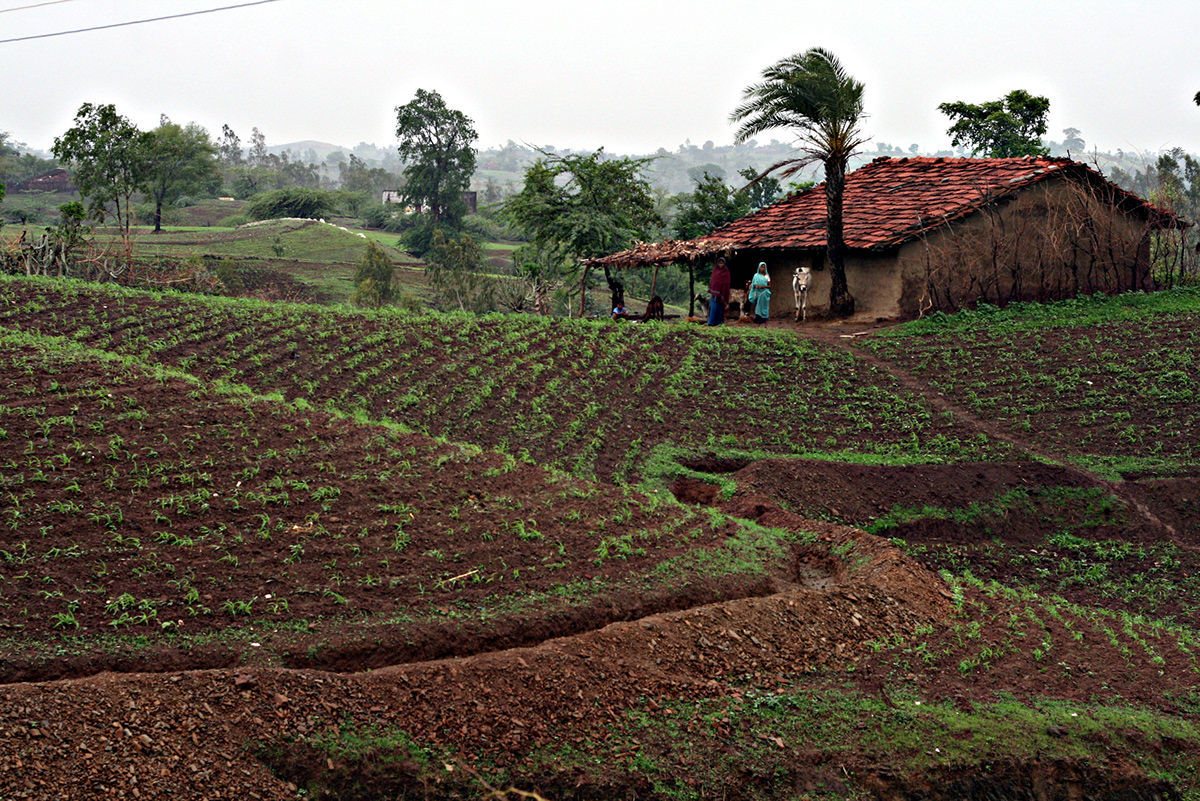
Innovation in Farming Practices
Banswara,
Rajasthan
In the undulating and rocky terrain of Banswara (southern Rajasthan) it is almost impossible to hold water. Agriculture is rain-fed. Then, with a lot of difficulty these trenches were dug out and the land was evened out at places to try agriculture. These trenches stop and hold water to irrigate the adjoining land.
The hard work, planning and experiment – all paid off very well.
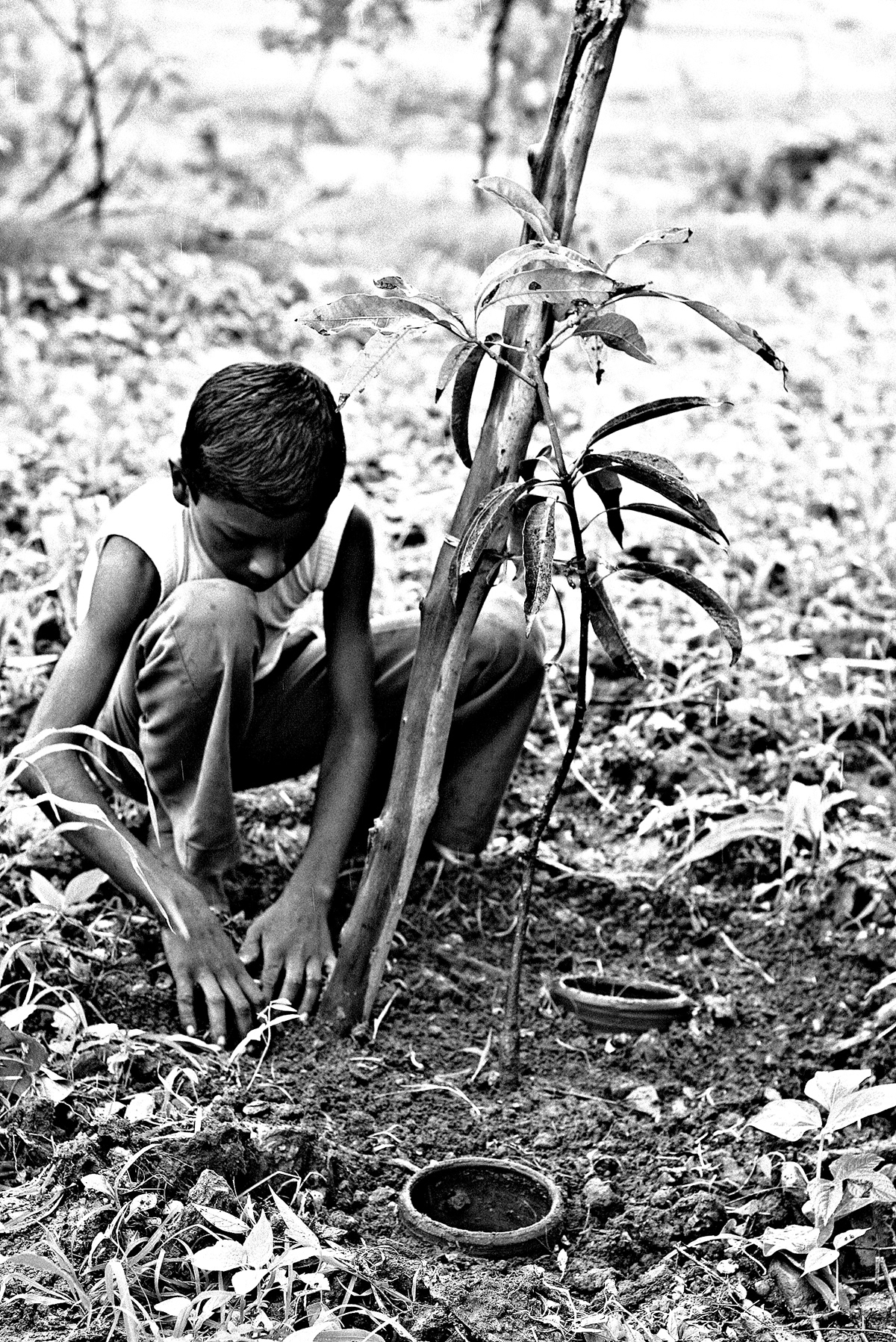
Mud-pots for Drip irrigation
Banswara,
Rajasthan
Drip irrigation utilizes a slow and even application of low-pressure water to soil and plants using plastic tubing placed directly at the plants root zone. In an effort to find alternative method of irrigation with high water demands in arid region drip irrigation can be very successfully used. In Banswara (Rajasthan-Gujarat border), drip irrigation is practiced in the traditional way where cylindrical mud pots are used instead of pipes. The proportion is kept around 70% sand + 30% clay.
It took three failed seasons to get to this practice right. It surely paid off very well. Organic farming of local fruits is practiced in 3x3x3 mt deep pits. Three years of care and then the roots are strong enough to break through any rock in its way.
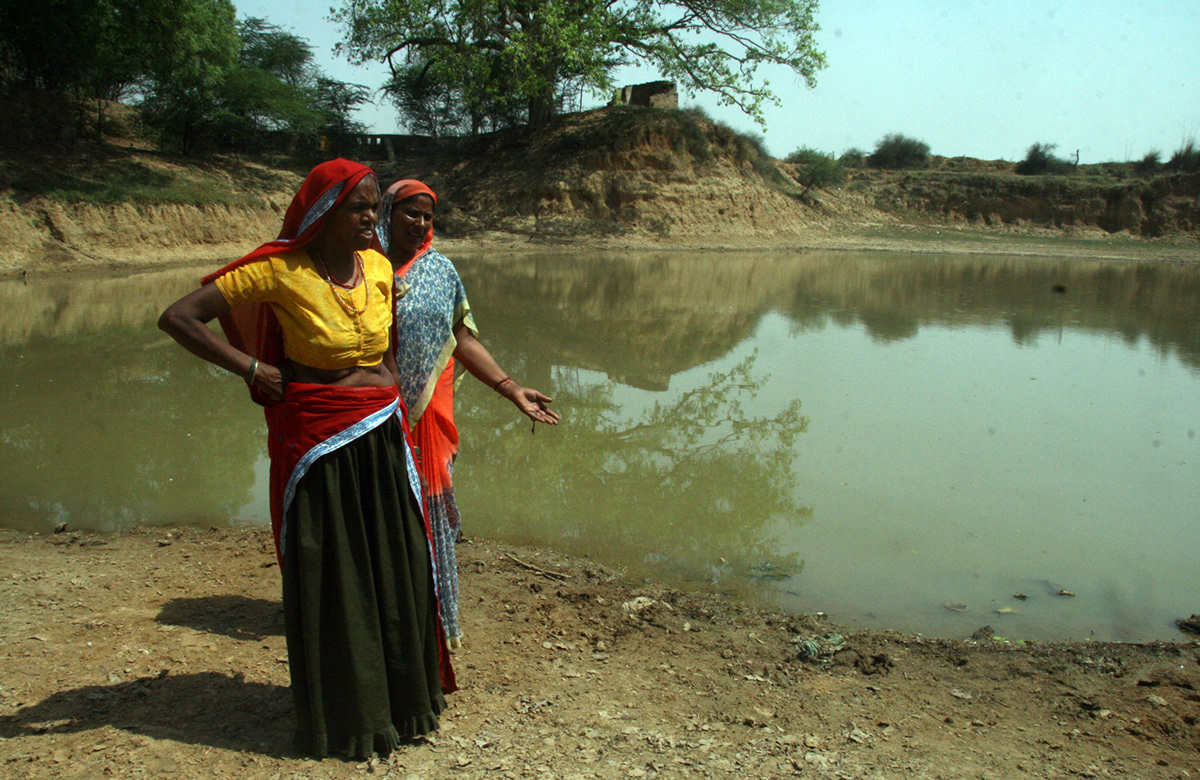
‘Johad hai to gaon hai.’
‘ We are alive only because of this lake.’
After what is projected as scarcity in the water debates today, salinity poses as a real-bigger issue. Marred by both these issues, these women from a small village in Haryana, mobilized themselves to build this johad (small lake like structure) for drinking water. Raindrops were still present when we visited this area in the heat of April. Stories like these from the bottom are an inspiration today, not just for the rhetoric of sustainability but also for women’s movement.
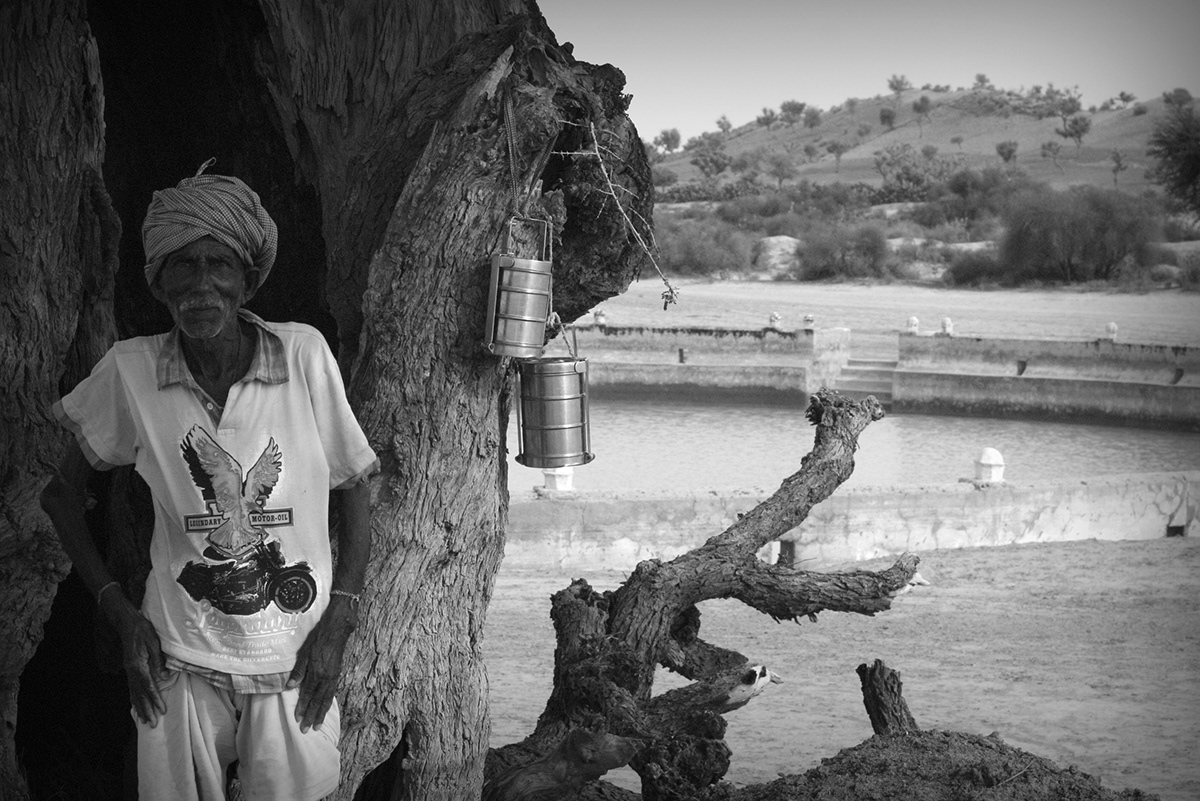
Guard at the Tanka
Churu
Rajasthan
The tanka (for harvesting rainwater) stores water for months after it has rained and provides drinking water for people and animals. The area has to be kept clean to avoid contamination and ensuring hygiene. Magga Ram was appointed 40 years back. He ensures that the area is clean and than animals don’t get into the water. His salary comes in the form of food grains given by the villages nearby who use the tanka’s water.

Rooftop RWH Taankas in Jaisalmer
Innovations in traditional knowledge
This house, in a remote part of Jodhpur is an excellent example of innovations. Traditional practice of having a tanka has been connected with rooftop rainwater harvesting. The rooftop is kept clean and swept twice a day so that the rainwater falling on it can be transported to through pipes into the drinking water storage. With the local well kilometers away and no pipe-water supply from the government, this family of six has not had any scarcity or salinity issues since they built this.
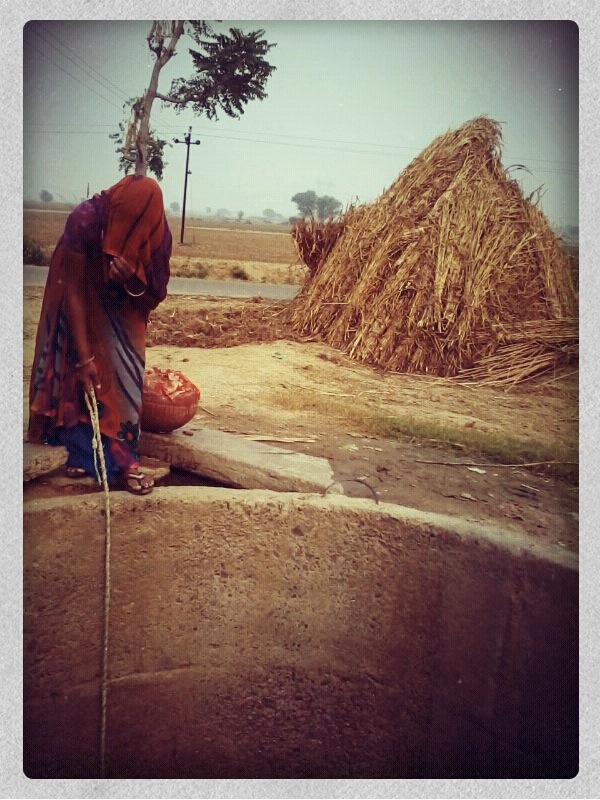
Water-women-harrassment.
Mundaka village, Mewat, Haryana
Mundaka village, Mewat, Haryana
"Ek hi kuan hai meethe paani ka poore gaon ke liye. Shaam ke baad jaana theek nai hota, thoda dur hai na."
(There is only one well for drinking water in the entire village. It is a bit far so to go there in the evenings can be dangerous.)
And she covered her face quickly as our driver came forward to look at the kuan (well). She was talking about harassment by men after the dark on the route to the well. There are elaborate plans to install rainwater harvesting systems at household level(rooftop-in water tanki in the house premises) in this village.
" Ghar pe hee ajayega seedha to aram ho jayega".
(If we can get water at home, nothing like it)
She smiled. And she looked amazed.
(There is only one well for drinking water in the entire village. It is a bit far so to go there in the evenings can be dangerous.)
And she covered her face quickly as our driver came forward to look at the kuan (well). She was talking about harassment by men after the dark on the route to the well. There are elaborate plans to install rainwater harvesting systems at household level(rooftop-in water tanki in the house premises) in this village.
" Ghar pe hee ajayega seedha to aram ho jayega".
(If we can get water at home, nothing like it)
She smiled. And she looked amazed.
